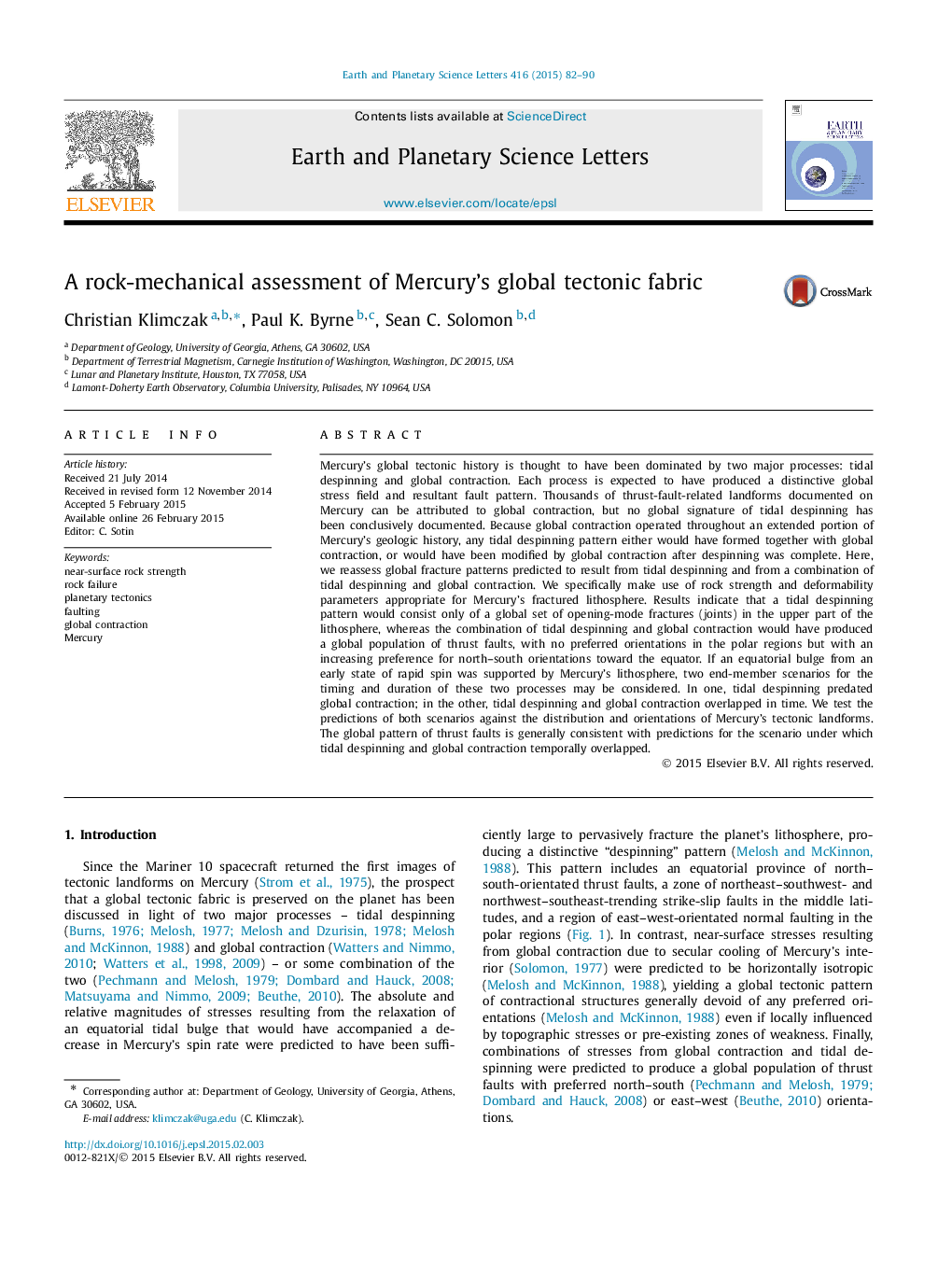| کد مقاله | کد نشریه | سال انتشار | مقاله انگلیسی | نسخه تمام متن |
|---|---|---|---|---|
| 6428525 | 1634740 | 2015 | 9 صفحه PDF | دانلود رایگان |
- We assess stress fields from tidal despinning and global contraction on Mercury.
- We estimate elastic properties and strength for a fractured basaltic lithosphere.
- Predicted global tectonic patterns differ from those of previous models.
- These patterns are compared with faults mapped from MESSENGER observations.
- Stress distributions confirm that cumulative global contraction exceeded 5 km.
Mercury's global tectonic history is thought to have been dominated by two major processes: tidal despinning and global contraction. Each process is expected to have produced a distinctive global stress field and resultant fault pattern. Thousands of thrust-fault-related landforms documented on Mercury can be attributed to global contraction, but no global signature of tidal despinning has been conclusively documented. Because global contraction operated throughout an extended portion of Mercury's geologic history, any tidal despinning pattern either would have formed together with global contraction, or would have been modified by global contraction after despinning was complete. Here, we reassess global fracture patterns predicted to result from tidal despinning and from a combination of tidal despinning and global contraction. We specifically make use of rock strength and deformability parameters appropriate for Mercury's fractured lithosphere. Results indicate that a tidal despinning pattern would consist only of a global set of opening-mode fractures (joints) in the upper part of the lithosphere, whereas the combination of tidal despinning and global contraction would have produced a global population of thrust faults, with no preferred orientations in the polar regions but with an increasing preference for north-south orientations toward the equator. If an equatorial bulge from an early state of rapid spin was supported by Mercury's lithosphere, two end-member scenarios for the timing and duration of these two processes may be considered. In one, tidal despinning predated global contraction; in the other, tidal despinning and global contraction overlapped in time. We test the predictions of both scenarios against the distribution and orientations of Mercury's tectonic landforms. The global pattern of thrust faults is generally consistent with predictions for the scenario under which tidal despinning and global contraction temporally overlapped.
Journal: Earth and Planetary Science Letters - Volume 416, 15 April 2015, Pages 82-90
